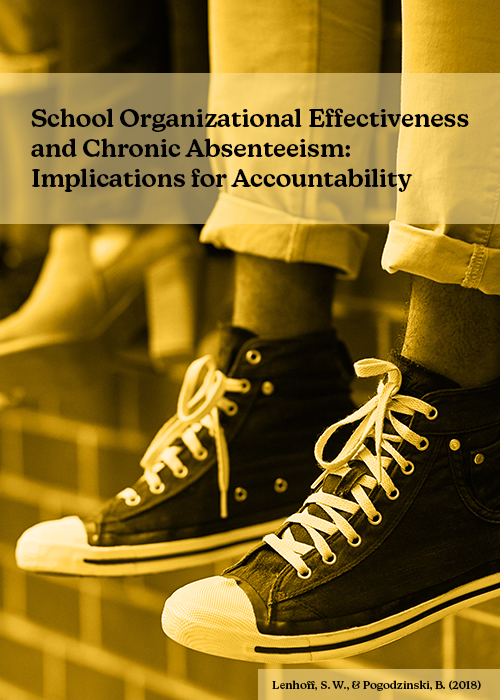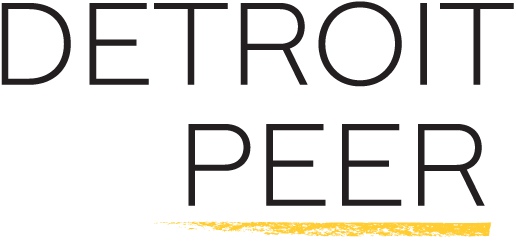Partner: DPSCD
Chronic Absenteeism in the School-Prison Nexus
This qualitative case study examines how attendance management practices are designed and implemented in a large urban school district and explores the empirical and conceptual relationship between student behavior and attendance management within the “school-prison nexus.” We use interviews with parents, high school students, and staff charged with reducing chronic absenteeism to demonstrate how managing students’ attendance through intervention plans, student monitoring, and threats of legal action have implicit and explicit parallels to the management of student behavior in schools and could be considered a potential mechanism through which the school-prison nexus functions. We conclude with implications for schools and districts as they seek ways to reduce chronic absenteeism without contributing to the over-surveillance and punishment of high school youth.
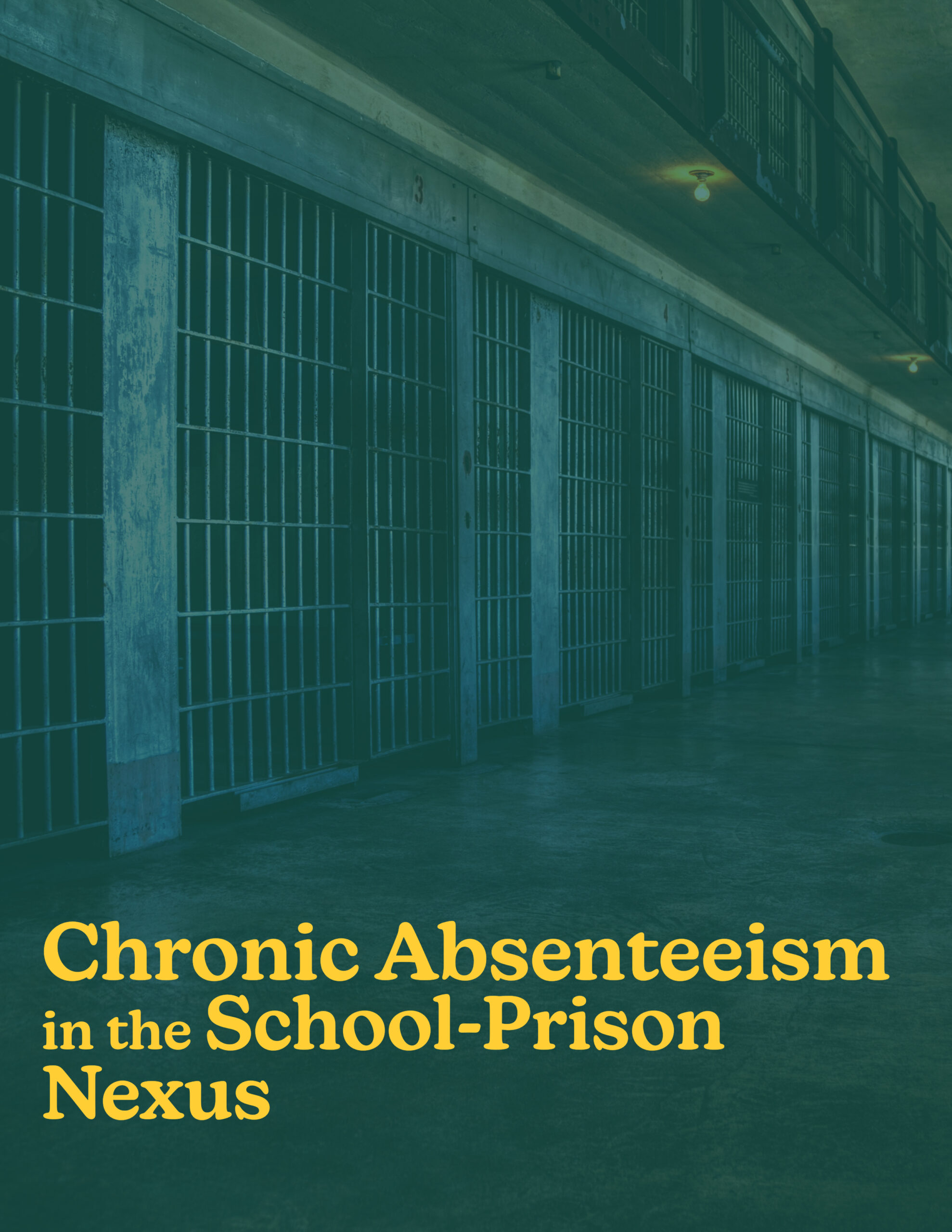
Gaps in Identification and Support for Students Experiencing Homelessness and Housing Instability in Detroit
Homelessness and housing instability can have significant negative effects on students’ academic and behavioral outcomes. Schools that endeavor to support students who are experiencing housing instability can only do so if they accurately identify students facing these challenges. This mixed-methods study provides deep, contextualized data on the experiences of housing unstable youth and families in Detroit traditional public and charter schools, whether and how they are identified as housing unstable by their districts, and what schools are doing to support them. We find that 16% of Detroit students were housing unstable in 2021-22, but Detroit schools only identified 4% of students as homeless under the McKinney-Vento Act. Our qualitative data suggest that this undercount is predominantly related to parents’ feelings of stigma and shame associated with discussing their situation with their schools and in some cases a lack of follow-through when parents do divulge their housing issue. Housing unstable students who were not identified by their districts as such were more likely to have been suspended; identification was not associated with attendance or student mobility, compared to other housing unstable students.
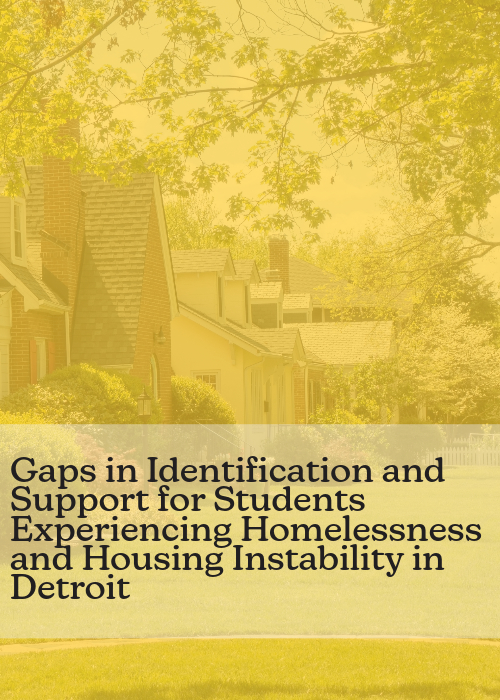
Detroit Schools Severely Under-Identify Students Experiencing Homelessness and Housing Instability
In this policy brief in partnership with Poverty Solutions at UM and MSU's College of Education, we provide clear evidence that Detroit schools under-identify students experiencing homelessness and housing instability, and we identify ways that schools and districts can improve identification.

09/30/2022
Every School Day Counts Detroit (ESDCD) 4 Pillars Project
This is a mixed methods developmental evaluation of the implementation and effect of a whole-school initiative to reduce chronic absence through the use of wraparound services, communications, technical assistance, and research.

School Access and Transportation in a Time of COVID
This study examines the impact of the COVID-19 pandemic on school mobility and enrollment in Detroit and NYC.

Parent Work Schedule and Student Attendance
This study examines how parents’ employment and work schedule are associated with student attendance in school and the probability of being chronically absent. It contributes new knowledge on how workplace polices outside of schools can shape what we typically think of as school outcomes.

Attendance Agent Networked Improvement Community
This study explores the implementation and effectiveness of a key district strategy for reducing chronic absenteeism: the use of school-based attendance agents and a multi-tiered system of support. We examine the organizational and environmental conditions that shape agents’ work, their conceptual understanding of the problem of absenteeism, their use of improvement methods to learn how to improve their practice, and the alignment of the strategy with the nature of the problem in Detroit.

Economic and Educational Opportunity in the Context of Neighborhood Change
Children growing up in segregated and under-resourced neighborhoods and schools have continuously faced structural inequities resulting in worse educational and economic outcomes. In highly segregated and under-resourced neighborhoods, one way that educational inequality persists is through inequitable access to resources and information through social networks. Federally sponsored housing programs have sought to address these inequities by disrupting concentrated poverty and racial segregation in neighborhoods, but one challenge of such programs has been their primary focus on housing, neglecting other neighborhood conditions and social resources. HUD’s Choice Neighborhoods Initiative (CNI) was established to address these prior limitations by strengthening community social cohesion through cross-sector collaborations. Prior research has demonstrated that social networks – one’s relationships and connections with others – could be a key driver of upward mobility for Black low-income youth. However, few studies have empirically explored how neighborhood interventions might expand or deepen the social connections of youth in ways that reduce inequality in educational opportunities. This study aims to describe and clarify the mechanisms through which a major federal housing initiative can reduce educational inequality for Black low-income youth by transforming their social networks. A second aim of this study is to examine whether key components of the CNI are implemented in ways that connect housing and school sectors to disrupt segregation, foster neighborhood and school integration, and empower residents, particularly low-income Black residents, to shape policy enactment.

Detroit Parents’ Attitudes on COVID-19 Prevention Strategies in School
This report summarizes key findings from a representative survey of Detroit parents of K-12 students fielded in January 2022. By examining Detroit parents’ support for quarantine, masking, vaccine mandates, and remote learning policies in schools alongside specific pandemic-related hardships, we were able to identify the degree to which these barriers shaped a given household’s support for each policy. We hope this research informs the development of school health measures that will ensure equitable educational access as the pandemic continues into this school year.

Beyond the Bus: Reconceptualizing School Transportation for Mobility Justice
This essay combines an ecological perspective with a mobility justice theoretical framework to reconceptualize the relationship between school transportation and educational access. Authors Sarah Winchell Lenhoff, Jeremy Singer, Kimberly Stokes, James Bear Mahowald, and Sahar Khawaja document the problem of “getting to school ”that is at the intersection of students’ family, community, and social contexts and how it goes beyond whether there is a reliable mode of physical transportation. Bringing together a historical analysis of the policy landscapeand interview data from parents and students in Detroit, they find that school transportation problems reflect the unequal political, social, and economic context in which families navigate enrollment and attendance. They discuss how policymakers can advance mobility justice in school policy by equitably distributing transportation resources, engaging students and parents as experts in developing and communicating transportation policy, and using institutional power to remedy structural barriers to educational access.
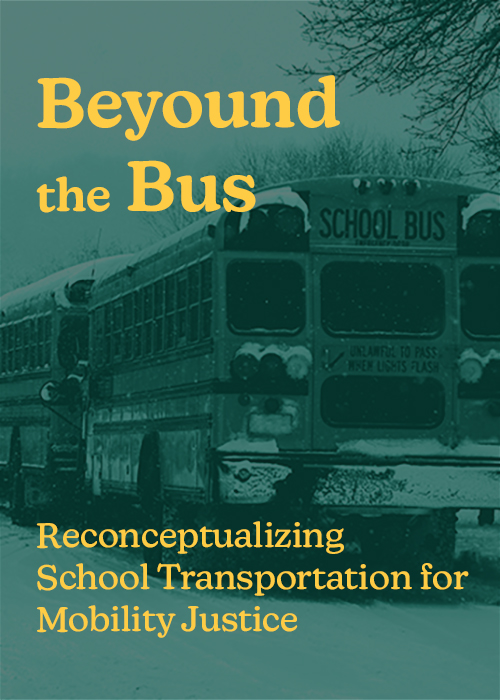
Promoting Ecological Approaches to Educational Issues: Evidence from a Partnership around Chronic Absenteeism in Detroit
Many problems that we conceptualize as “educational” have multiple causes that cut across students’ ecosystems. Yet, most education reforms are targeted narrowly at schools, educators, and students. Supporting educators and community leaders in conceptualizing educational problems from an ecological perspective and designing policies in alignment with that conceptualization is critical to improving student outcomes. This study documented the macro-, meso-, and micro-level institutional conditions that shaped how educators and community leaders conceived of the problem of absenteeism in response to research framed ecologically. Our findings highlight the challenges researchers may have in influencing ecosystemic policy solutions, but they also provide insight into potential pathways for doing so through research partnerships.
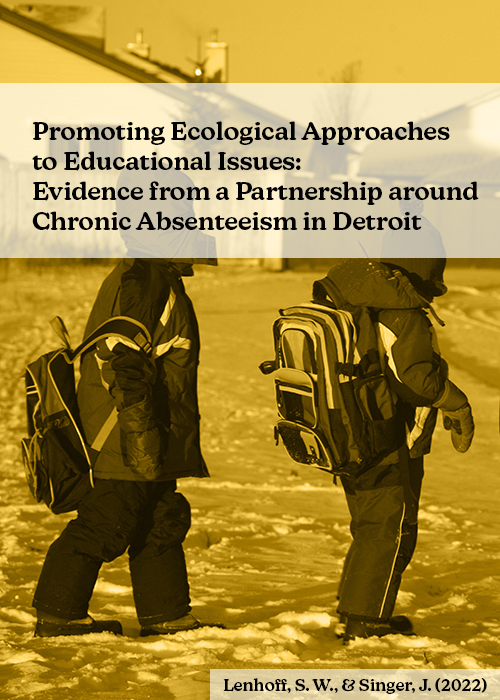
The Potential for Improvement Science and Research Partnerships to Maximize the Policy Relevance of School Improvement Research
Increased demands by policymakers for evidence-based practices and rigorous impact evaluations in education offer researchers an unprecedented opportunity to influence policy. Yet, academic research has an infamous reputation for not addressing the real problems of policy and practice, being difficult to understand, and being slow to adapt to changing circumstances in implementation. The increasing complexity of the educational policy landscape threatens to exacerbate the disconnect between researchers and policymakers. Researchers interested in school improvement cannot be content to describe and critique these processes. This book chapter describes our approach to policy-engaged research partnerships and the role of improvement science in internal and external work processes.
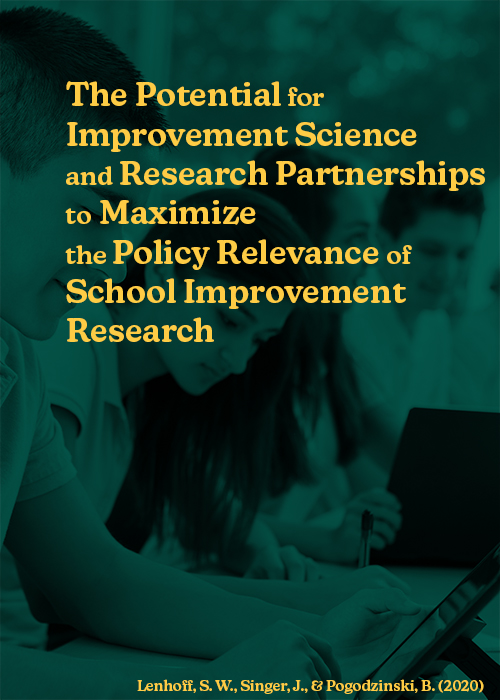
A Collaborative Problem-Solving Approach to Improving District Attendance Policy
Collaborative problem-solving research approacheshave the potential to support improvement in educational policy and practice beyond instruction, by facilitating the development of a shared understanding of complex problems and creating social structures where district, community, and research partners can work together to solve them. This study investigates how findings from a developmental evaluation of a district attendance initiative were incorporated into the initiation process of a networked improvement community to create a shared narrative about how members conceptualized the problem of absenteeism and how they should adapt their levers to better align to that problem. The developmental learning process created an infrastructure within which district leaders and community partners could develop a partnership culture that facilitated change in policy. This study suggests the need to revisit the assumptions that have driven non-instructional improvement efforts and highlights the potential of collaborative problem-solving to strengthen the implementation of district reforms.

The Potential for Multi-Site Literacy Interventions to Reduce Summer Slide Among Low-Performing Students
Despite the evidence that summer learning loss or “slide” can have devastating cumulative effects on student performance in school, there are few examples of system-wide interventions that can prevent summer learning loss at scale in urban contexts with high rates of low-performing students. This study reports on the first year of a city-wide effort to reduce summer literacy loss in Detroit, Michigan, through a multi-site collaboration between the city Parks and Recreation Department, the local public school district, and several unique program providers. Results from this pilot study suggest that short-duration, high-intensity tutoring may help to prevent learning loss in literacy among a population with high rates of socio-economic disadvantage and low initial performance, regardless of specific program methodologies. This study has implications for other large cities seeking to prevent summer slide by building on existing municipal and district infrastructure.
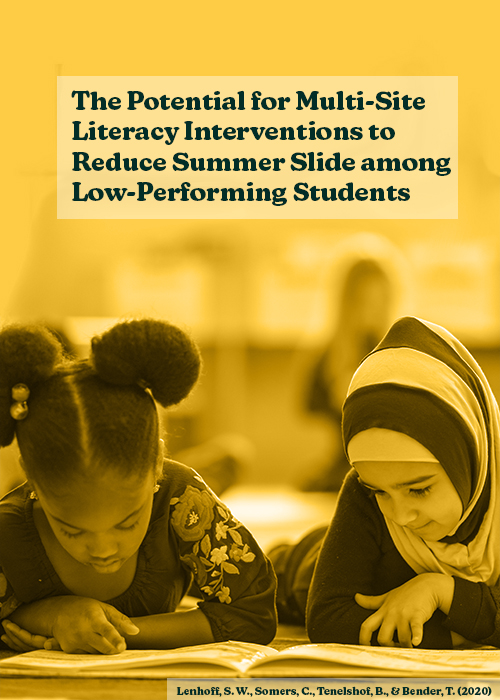
School Organizational Effectiveness and Chronic Absenteeism: Implications for Accountability
Chronic absenteeism in K-12schoolsis strongly associated with critical educational outcomes such as student achievement and graduation. Yet, the causes of chronic absenteeism are complex, with environmental, family/individual, and school factors all affecting the likelihood of a student attending school regularly. This exploratory study examines whether school organizational effectiveness has the potential to moderate external influences on chronic absenteeism. Using school-level scores from the 5Essentials surveys, we find that, in traditional public schools, schools that are organized for effectiveness have lower rates of chronic absenteeism, while controlling for student demographics and grade level. In particular, schools with higher scores for “involved families” have lower chronic absenteeism. While charter schools in Detroit have significantly lower rates of chronic absenteeism than traditional public schools, we did not find an association between organizational effectiveness and chronic absenteeism in charter schools. This suggests that student sorting by school type may produce variation in chronic absenteeism rates that is not moderated by school actions. These findings have important implications for practice and policy, as educators seek to reduce chronic absenteeism in response to pressures from high-stakes accountability systems.
